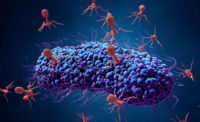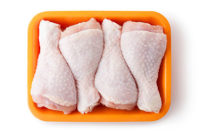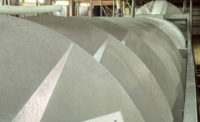Processors continue to increase the use of natural antimicrobial ingredients as they move toward cleaner labels. Identifying these natural compounds or groups of compounds that function singularly or together to be effective as antimicrobial systems in their products remains a top development area for them, says Jeff Sindelar, extension meat specialist and associate professor in Department of Animal Sciences at the University of Wisconsin-Madison.
Processors also are working on identifying secondary functions of antimicrobials, which include yield benefits and purge reduction. Processors are then tying together the ability for an antimicrobial system to minimize purge, which then can improve the efficacy of the antimicrobial system’s function.
For example, if an antimicrobial ingredient system can minimize purge in a fully cooked, retailed product during its shelf life, there would be in turn less availability for bacteria to use that purge to grow, Sindelar explains.
The challenge remains finding clean-label antimicrobials that meet clean-label requirements and meet the goal of effective dose. Processors have been moving toward organic acids, such as lactic, acetic, propionic and other types of ingredients or combinations of ingredients that are effective on a broad range of pathogenic bacteria and also have efficacy for spoilage bacteria.
Common antimicrobials include sodium lactate, sodium diacetate, sodium propionate, potassium lactate, potassium acetate and vinegar, says Wes Schilling, a professor in the Department of Food Science, Nutrition and Health Promotion at Mississippi State University.
With the greater number of products with clean labels and reduced sodium, this has led to an increase in the use of vinegar for clean-label purposes, he says. More versions of vinegar also are being used, such as liquid, dry and distilled white vinegar.
“Dry vinegar is increasing since there is less shipping cost,” Schilling explains. “Distilled white vinegar is being used more on clean labels because it is perceived to have minimal processing.”
Sodium propionate also is being used more because it can be used at lower percentages than lactates and therefore indirectly reduces sodium. Potassium lactate use is increasing in comparison to sodium lactate to reduce sodium as well.
Additionally, in cured products, cultured celery powder is being used to replace sodium nitrite.
Working with natural antimicrobials
Processors must ensure their products are getting a sufficient dosage of the antimicrobial component into their products’ ingredient systems and doing that uniformly in a way that is not jeopardizing other aspects of the products’ quality, including flavor, aroma and color, Sindelar says.
Using natural antimicrobials in a cost-effective manner is also a challenge as clean-label ingredients by and large are much more expensive than their counterparts. Natural antimicrobials sometimes cost two to four times as much, so a cost benefit for use in some decisions must exist, Sindelar adds.
Additionally, specific natural antimicrobials such as cultured celery powder — which is used to replace sodium nitrate and has proven efficacy against Clostridium botulinum, Clostridium perfringens and somewhat for Listeria monocytogenes — could cost 15 to 20 times more than its synthetic counterpart, Sindelar says.
In addition to cost, no one natural antimicrobial offers a slam-dunk at treating all pathogens. In turn, processors must compromise. “It is understanding what the limitations are and then working through those channels to determine what the recourse is,” Sindelar explains.
For example, if switching to natural antimicrobials is cost prohibitive, looking at ways to lower other processing costs may be the solution. Shelf life also may need to be adjusted from 90 days to 75 days as well. Additionally, processors may need to spend more money on validation studies to understand exactly and confirm the validity of the ingredients whereas sometime processors may have been able to use existing supplier information or conduct general modeling.
Moving forward, Schilling expects the use of cultured celery juice, cherry powder and lemon extract will continue to increase. He also anticipates seeing an increased use of vinegar, and types of vinegar, sodium propionate and other natural flavors from plant extracts that have antimicrobial properties.
As technology continues to develop, Sindelar expects natural antimicrobials will become more economically feasible. For example, some of the very early clean-label antimicrobials are now lower-cost ingredients primarily because they aren’t as effective as newer ingredient technologies develop.
“The future is seeing a lot of a compounds and systems that are available today that just become more effective and cheaper,” Sindelar says. “There continues to be research to identify new systems, which there’s definitely lots of hope and promise about these different ingredients that are being tested and which ones may eventually become effective enough to become a commercially viable antimicrobial.” NP





Report Abusive Comment